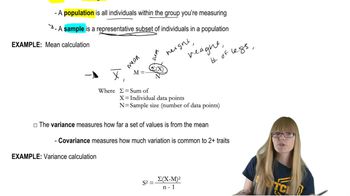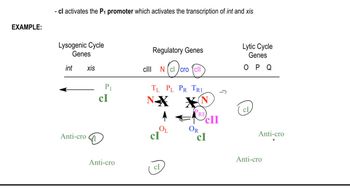Table of contents
- 1. Introduction to Genetics51m
- 2. Mendel's Laws of Inheritance3h 37m
- 3. Extensions to Mendelian Inheritance2h 41m
- 4. Genetic Mapping and Linkage2h 28m
- 5. Genetics of Bacteria and Viruses1h 21m
- 6. Chromosomal Variation1h 48m
- 7. DNA and Chromosome Structure56m
- 8. DNA Replication1h 10m
- 9. Mitosis and Meiosis1h 34m
- 10. Transcription1h 0m
- 11. Translation58m
- 12. Gene Regulation in Prokaryotes1h 19m
- 13. Gene Regulation in Eukaryotes44m
- 14. Genetic Control of Development44m
- 15. Genomes and Genomics1h 50m
- 16. Transposable Elements47m
- 17. Mutation, Repair, and Recombination1h 6m
- 18. Molecular Genetic Tools19m
- 19. Cancer Genetics29m
- 20. Quantitative Genetics1h 26m
- 21. Population Genetics50m
- 22. Evolutionary Genetics29m
2. Mendel's Laws of Inheritance
Probability and Genetics
Problem 19c
Textbook Question
Textbook QuestionIf two six-sided dice are rolled, what is the probability that the total number of spots showing is
7?
 Verified Solution
Verified SolutionThis video solution was recommended by our tutors as helpful for the problem above
Video duration:
1mPlay a video:
Was this helpful?
Key Concepts
Here are the essential concepts you must grasp in order to answer the question correctly.
Probability
Probability is a measure of the likelihood that a particular event will occur, expressed as a ratio of favorable outcomes to the total number of possible outcomes. In the context of rolling dice, it quantifies how often a specific total, such as 7, can be achieved compared to all possible outcomes when two dice are rolled.
Recommended video:
Guided course

Probability
Sample Space
The sample space is the set of all possible outcomes of a random experiment. For rolling two six-sided dice, the sample space consists of 36 combinations (6 sides on the first die multiplied by 6 sides on the second die), which helps in calculating the probability of specific outcomes like rolling a total of 7.
Recommended video:
Guided course

Mathematical Measurements
Favorable Outcomes
Favorable outcomes refer to the specific results that satisfy the condition of the probability question. In this case, the favorable outcomes for rolling a total of 7 with two dice include the combinations (1,6), (2,5), (3,4), (4,3), (5,2), and (6,1), totaling six combinations that contribute to the desired outcome.
Recommended video:
Guided course

Decision Between Lytic and Lysogenic Cycles
Related Videos
Related Practice



